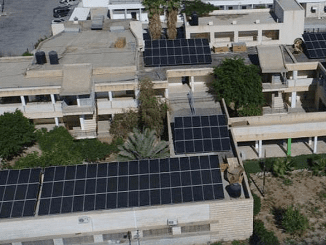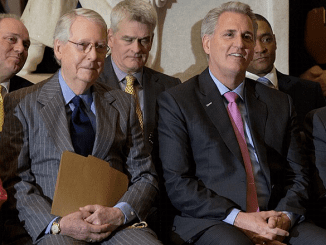
PROVIDENCE, Rhode Island, June 27, 2022 (ENS) – Rhode Island lawmakers last week passed a bill requiring that within 10 years 100 percent of electricity sold in the state come from renewable energy technologies such as wind and solar. Rhode Island Governor Daniel McKee, a Democrat, is expected to sign it into law.
The law will then require the state’s distribution utilities to purchase renewable energy credits to cover all of their retail electric sales, making tiny Rhode Island the first state in the nation to try this green energy advance.
Advocates say this will bolster renewables development and help the state achieve net-zero emissions by 2050. The goal may be easier to achieve because the state is small. With just 1,214 square miles (3,144 sq km), Rhode Island is the smallest U.S. state by area but not by population. The Rhode Island population is expected to be 1.09 million in 2022, making it the 44th most populous of the 50 states.
On Thursday Governor McKee joined members of the Biden-Harris Administration and a coalition of East Coast governors to launch a federal-state Offshore Wind Implementation Partnership.
With operation beginning on December 12, 2016, the Block Island Wind Farm is the first offshore wind farm in the United States.
“As home to the nation’s first offshore wind farm, Rhode Island is a pioneer in the blue economy,” said Governor McKee. “Rhode Island is on a path to reducing climate emissions to net-zero by 2050 and a 100 percent renewable energy standard by 2033 – harnessing the power of offshore wind is part of our pathway to achieving those targets. I thank President Biden and his Administration and my fellow Governors along the East Coast for joining together in this partnership to meet the needs of the economy of today and the future.”
The Offshore Wind Implementation Partnership includes 11 states along the East Coast, and will facilitate state and federal cooperation in building a strong, U.S.-based supply chain for offshore wind, growing a skilled workforce for the industry, and addressing important regional matters such as transmission, fishing, and other ocean use issues.
The 11 states in this new Offshore Wind Implementation Partnership are: Connecticut, Delaware, Maine, Maryland, Massachusetts, New Hampshire, New Jersey, New York, North Carolina, Pennsylvania and Rhode Island.
The Offshore Wind Partnership is promising to collaborate on supply chain strengthening, advancing the national offshore wind supply chain roadmap, and prioritizing financing for offshore wind vessels.
Rhode Island is also part of the Regional Greenhouse Gas Initiative, RGGI, a 13- year-old cooperative effort among the 11 states of Connecticut, Delaware, Maine, Maryland, Massachusetts, New Hampshire, New Jersey, New York, Rhode Island, Vermont, and Virginia to cap and reduce carbon dioxide (CO2) emissions from the power sector.
The two sets of 11 states participating in these clean energy ventures are nearly identical, with this exception. North Carolina and Pennsylvania are in the Offshore Wind partnership but do not participate in the RGGI cap-and-trade market, while Vermont, and Virginia participate in the RGGI market but not in the Offshore Wind partnership.
Featured image: The first offshore wind farm in the United States, the 30 megawatt, five turbine Block Island Wind Farm began commercial operations in December 2016 in Rhode Island waters. (Photo courtesy U.S. Department of Energy)



